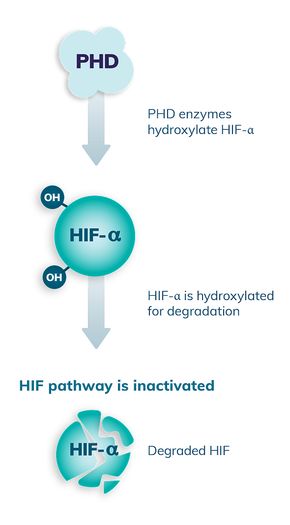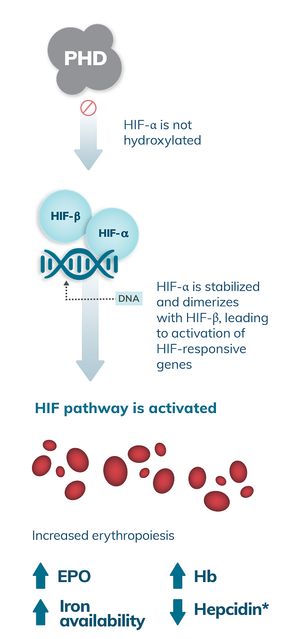Mechanism of disease
Anemia due to CKD is multifactorial, and the HIF pathway plays an important role1-6
HIF is a transcription factor that activates genes for EPO production and iron metabolism, which can result in erythropoiesis5,7
In healthy kidneys, the HIF pathway helps regulate the body’s response to hypoxia5,7
HIF is regulated by oxygen-dependent PHD enzymes.1,5,7
In normoxia, PHD enzymes are active1,2,5,7

In hypoxia, PHD enzymes are less active1,2,5,7

contribute to the development of anemia due to CKD2,6
Anemia due to CKD is multifactorial
- Damage to kidney cells impairs oxygen sensing and reduces EPO production2,6
- Anemia also develops due to chronic inflammation, which can lead to increased hepcidin,* impairing iron metabolism3,4
Unmet need
Suboptimal management of anemia due to chronic kidney disease (CKD) can negatively impact patient health8,9
of the ~550,000‡ adult patients with ESRD on dialysis developed anemia10-13
adult patients with ESRD on dialysis fell below target Hb range10,14,15,§
of adult patients with ESRD on dialysis received blood transfusions in 2022 despite most of them being on anemia treatment, which may jeopardize their ability to receive a kidney transplant10,16
Patients on dialysis with anemia due to CKD may be at an increased risk of clinical complications and higher rates of hospitalization8,9

